Today I’m going to reveal how to warm up for your calisthenics workouts.
If you are getting injured all the time, THIS might be just the reason why.
In this post you will learn PRECISELY how you can use your warm up to:
- get results faster
- prevent injuries
- get most out of your training
So without further delay, let’s do this!
More...
The Science Behind Warming Up
According to the Journal for Sports Medicine, warm ups have a positive effect on injury reduction.
As you know by now most calisthenics injuries are upper body related:
How does warm up reduce the number of injuries?
A proper warming up improves your physical performance by increasing your body temperature and flexibility.
And don't forget post workout soreness...
...warming up will probably reduce the muscle soreness in your body the next day.
But your physical performance is just one side of the story.
Warming also improves your mental performance by increasing your timing, motor control and coordination of muscles.
On top of that, you can also time your training to make use of your circadian rhythm.
According to Wikipedia:
Why is this important?
For example, training later on the day around 17:00 will allow you to have access to more muscle strength:
In short, beginning your training warmed up is IMPORTANT to increase your athletic performance...
...and avoid injuries.
Key Takeaway
Your body needs heat and a higher core temperature to prevent injuries and soreness while maximising your strength.
And warming up will activate your body.
Chapter 2:
The Keys To Warming Up For Calisthenics Workout
In this chapter I'll cover the keys of warming up.
You'll discover three simple compound movements to use in your warm ups and what parts of your body you should focus on (and what questions you can ask yourself for injury prevention).
Sounds like a good plan, right?
Compound Movements
When you warm up, warm up your ENTIRE body.
Instead of just a part of it.
How?
By using compound exercises for beginners:
Any of these can be done by anyone for 3-5 min.
When this becomes easy you can:
- change the speed and duration.
- complexity by adding more variation.
- or continue with the 7 effective routines for beginners.
Which means you can and should improve your warm up as you become stronger.
And better.
Improve Weak Spots
Injuries are ALWAYS around the corner.
Especially if you are just getting started.
For example, a speedy Reddit search:
Take this other example of an extremely motivated beginner:
So once again, your warm up is a useful moment to give your weak spots (like your shoulders and wrists) more attention.
That’s why you want to ask yourself:
- Where am I injury prone?
- What are my weaker places?
- Which places on my body do I need to pay special attention to?
Keep in mind:
Your injuries are not just going to disappear.
So, the worst thing you can do is ignore your injuries.
Instead, wrap your joints in exercise.
You will discover something useful....
..what makes you weak now, is EXACTLY what will make you STRONGER.
Chapter 3:
7 Effective Warm Up Routines For Calisthenics Beginners
Now it's time to get into the nitty gritty warm up routines.
Specifically, what exercises you can do and for how many reps and how long.
In this chapter, I'm going to show you PROVEN warm up routines to prevent injuries.
Let's get fired up!
The Beginner Routines
A good warm up or cardio workout contains some low impact exercises.
So we made 7 diagrams.
These are really helpful for anyone looking to start their calisthenics training injury free.
Besides these compound movements, you should also pay attention to old injuries and weakspots.
Here are the effective and safe routines for beginners:
Rope Jumping Tips
Your jumping rope might be the SIMPLEST warm up tool on the planet.
Why?
Because you can take it anywhere.
Unfortunately, that's exactly why most people don't give it the credit it should have.
Here is what it will improve:
- coordination
- explosive strength
- stamina
- timing
There are endless variations.
You can change the speed, jump on one leg or even change the direction in which you are swining.
Want some quick motivation to make sure you warm up done well?
Then don't miss the video below:
Stronger Wrists
As mentioned before your wrists are most likely to get injured first.
Before every workout I recommend you to pay extra attention by doing additional stretches.
Here are the three most important ones:
Do 25 to 50 reps of each.
Why so many reps?
Because your wrists need time and high reps are good for blood flow and recovery.
You can protect your wrists.
Don't make the same mistakes most beginners make.
Warm up!
Don't Skip Your Warm Up
You know by now how ESSENTIAL a good warming up is.
It takes a fraction of your time and can save you a lifetime of issues.
And you don't want to waste time on injuries.
Especially not with the calisthenics goals you have right now.
Does it mean you will never get injured?
There will be situations where you might get injured, but you will be prepared.
You will be ready and fired up.
Because calisthenics training is about preparing your body for whatever it may face.
And coming out...
...victorious.
*Fist Bump*
Now I’d like to hear from you:
Did you like this post? What warm up routine will you try?
Or maybe you have a question about rope jumping.
Either way, leave a quick comment below right now.

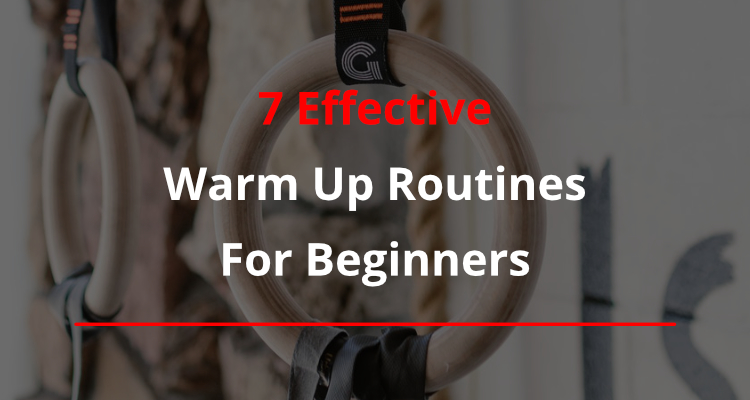
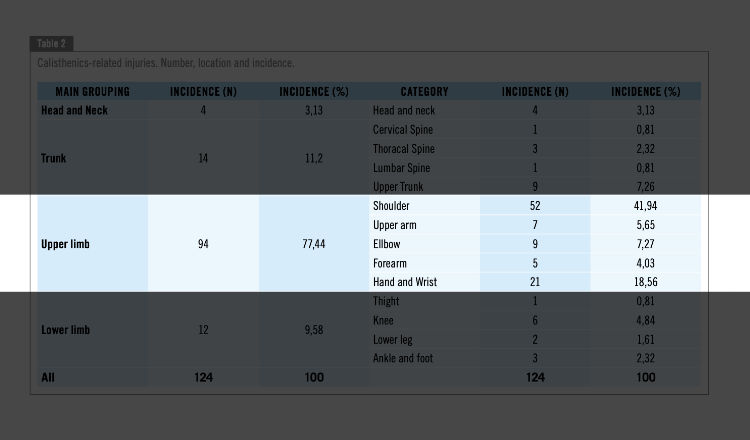
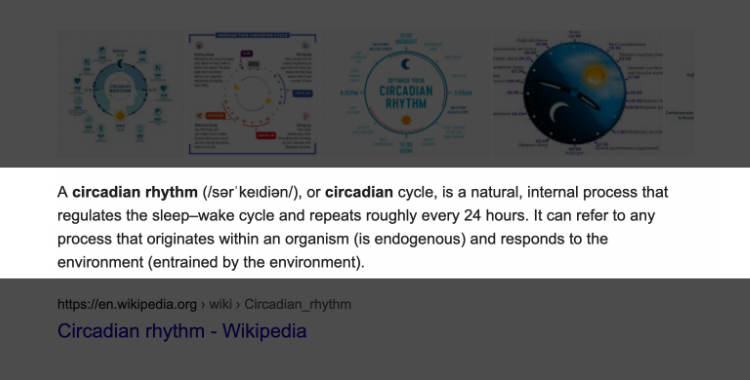
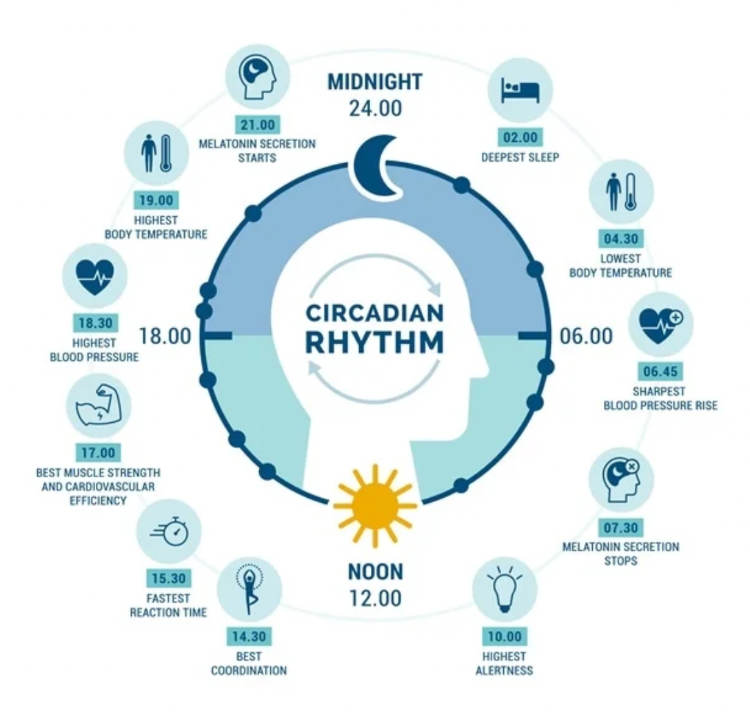
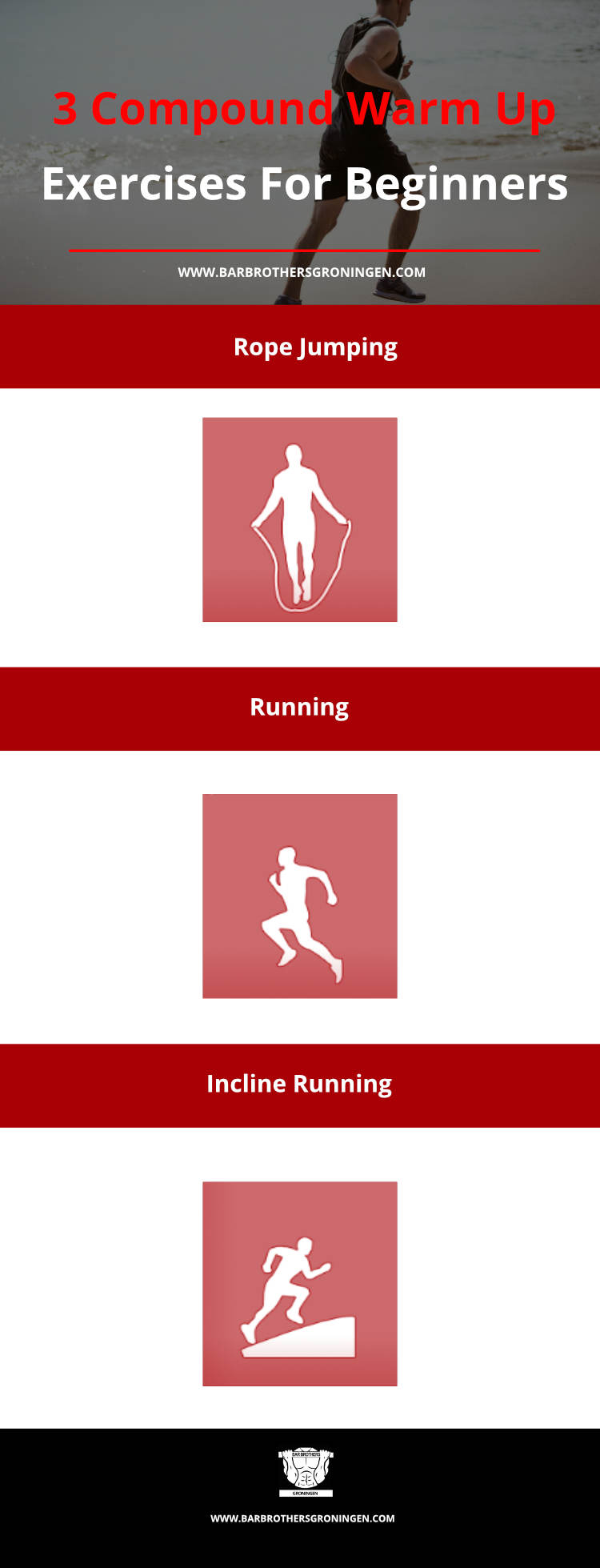
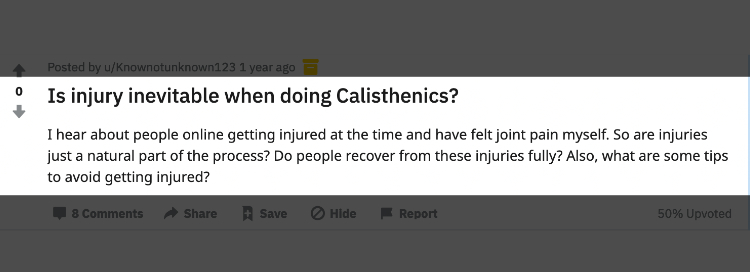
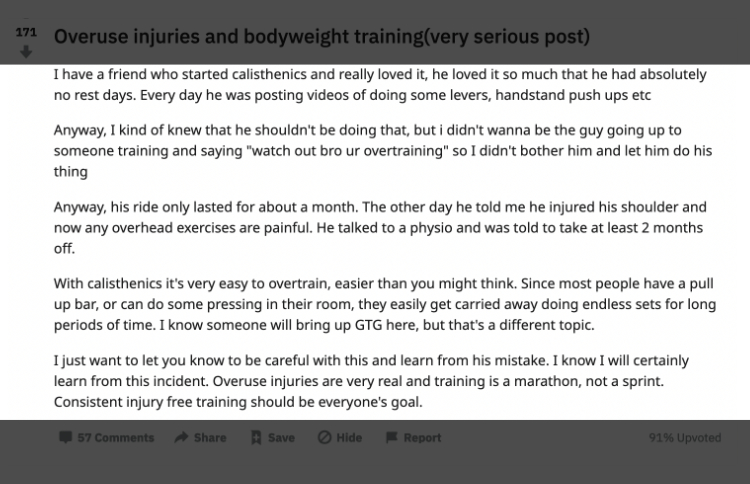
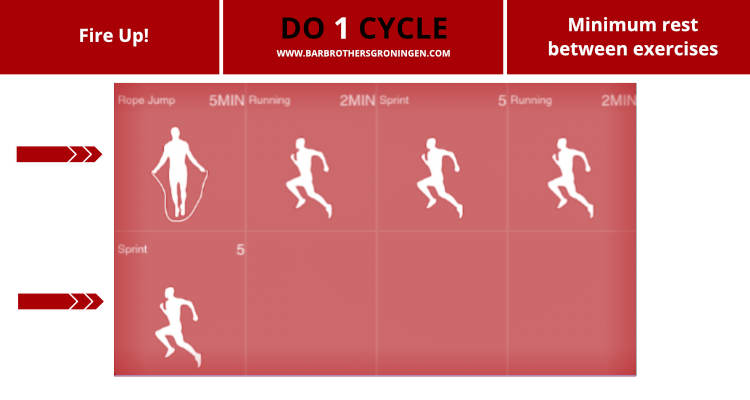
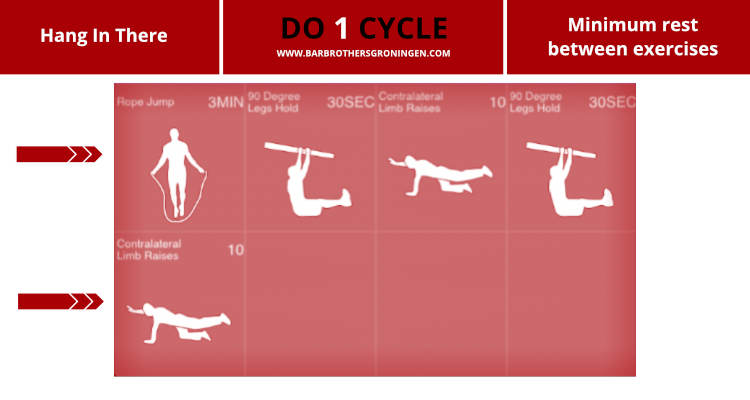
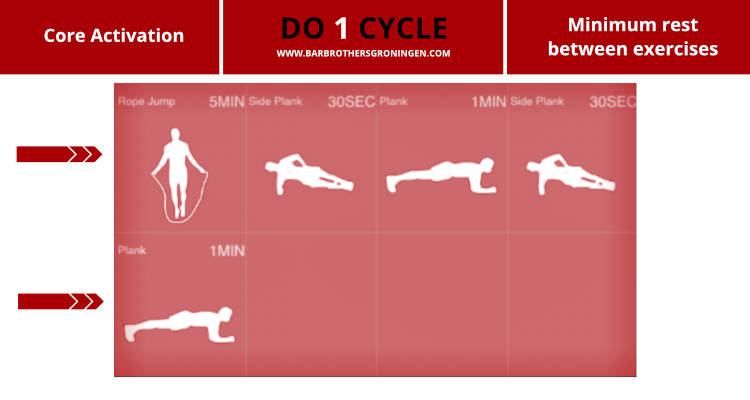
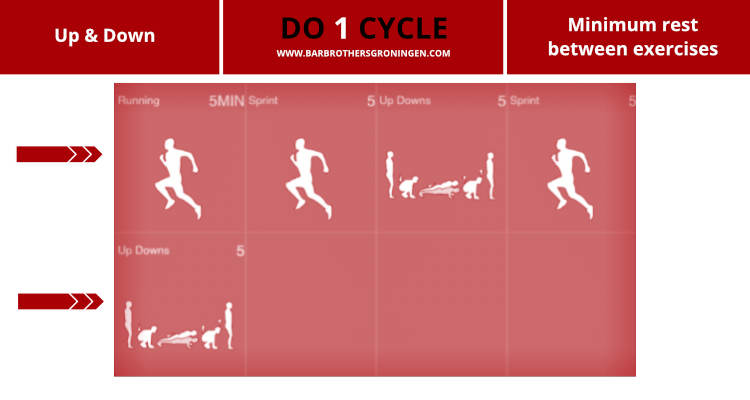
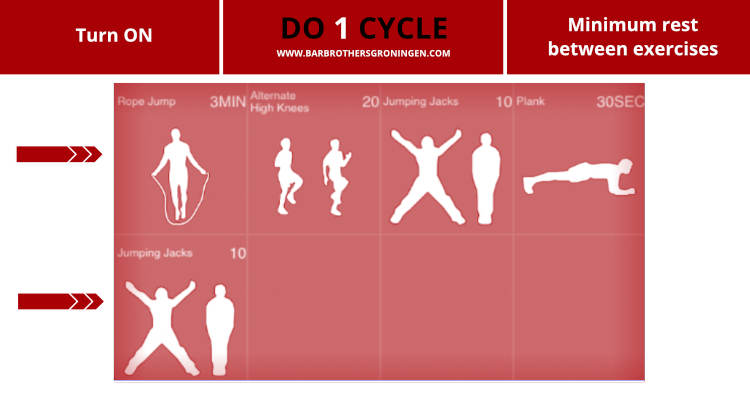
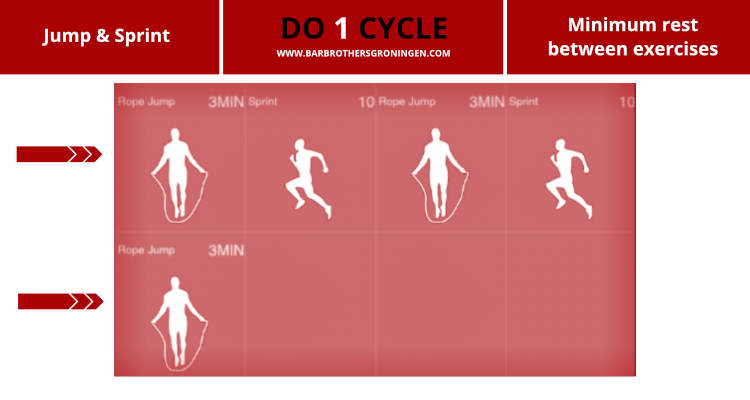
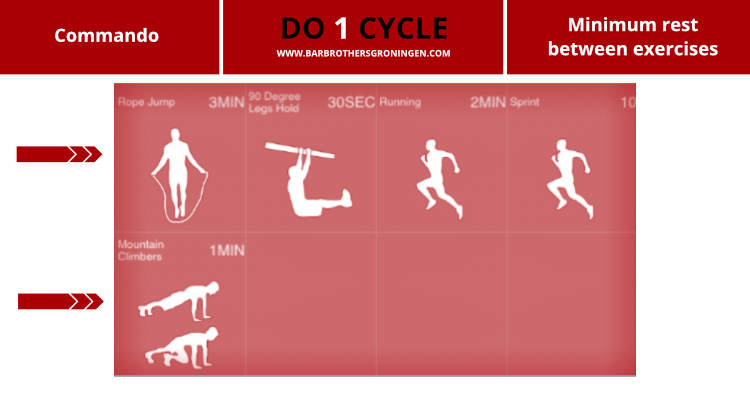
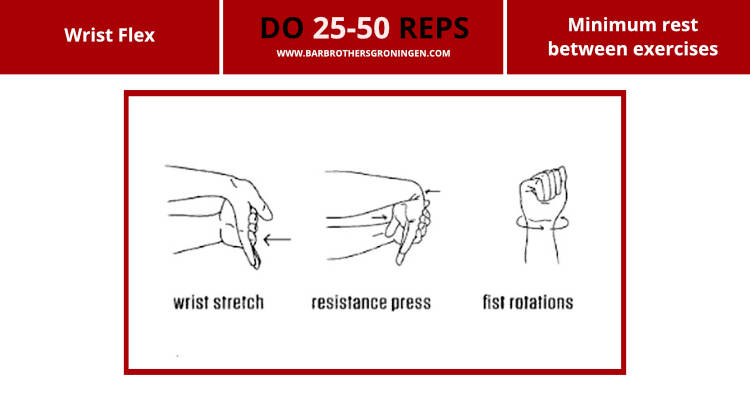
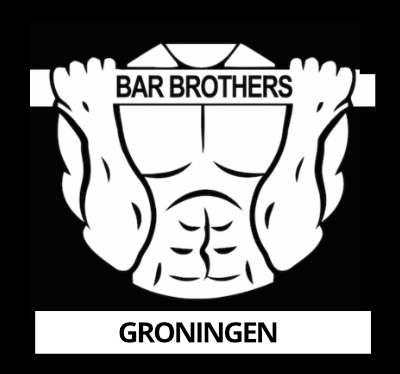
My lower back used to be my strongest but I did too much of deadlifts for a year and now my lower back is always sore even my whole back always feels very tight .
even my whole back always feels very tight .
Brother how can I loosen up my back bcoz I feel I’m in the pre injury phase
Hey Akhilraj,
Great question.
Read this post:
http://www.barbrothersgroningen.com/how-to-improve-your-posture-for-more-strength-health/
Specifically check the spinal waves and the active pidgeon, those open up the back and lower back muscles.
Beast mode ON!
Brother thanks for the reply **yes I’m truly happy that someone cares and understands many problems that we come across during the journey of getting fit**
I believe getting fit is a marathon than a sprint that we have to sustain for all our life,so I’m always worried about getting injured as I am a very active person I regularly play as a fast bowler in cricket (it’s a sport please google it if you don’t know ) which is very stressful on my back and shoulder and I am a budding lifter too !
Due to this I’m reducing the number of times I lift per week and I started more into calisthenics which I believe is more natural .
What do you think about this ?
BTW I’m a med student with considerable experience in fitness and sports so I’ll be very happy to contribute to your blog in any possible way !!
Thanks
Hey Akhilraj,
You are more than welcome!
We all need to start somewhere and having a bit of support from the other side can work miracles ;).
I completely agree, it’s a marathon…a life long one. I know cricket.
With regard to the shoulder, especially because you are putting a lot of stress on the rotator cuff muscles with swinging and throwing you need to ‘introduce hanging’ and ‘wrist exercises’.
Especially in throwing and hitting related sports a lot of injuries are shoulder and wrist related, these specific drills increase your overall grip strength, shoulder health and will bulletproof your wrist for if things turn south.
Read this post: http://www.barbrothersgroningen.com/calisthenics/
Go to chapter 6.
Natural is a relative term, more effective for a wider range of movements might be a better description.
Thanks for your offer and keep up the good work!
Beast mode ON!
I believe you should work on strengthening your core
Hey, thanks for this awesome guide! I was curious how I could anti-fragilize my groin muscles, as strengthen my ankles. Three or four years ago in high school I pulled my groin pretty bad in gym. It seems that both are pretty prone to being pulled easily. As far as my ankles go, sometimes putting the wrong pressure on my ankle before it’s prepared to support my body can cause it to give out. I wouldn’t say it happens all the time, just if I am careless. Any suggestions?
Thanks in advance!
Hey Hanna,
You are more than welcome!
Great question. For the hips, it’s generally a difficult one. Opening up and strengthening those isn’t just doing 5 ‘quick exercises’ it’s a combination of a lot of specific drills to build a flexible armour around the hips.
The horse stance is a great one to start with. Try building it up to 5×60 seconds.
With regard to the ankles, I have a bad ankle myself. There are a lot of things to do, the first one being…reducing the time you wear protective shoes. Those are actually destroying your intrinsic foot strength and overall ankle and foot mobility. This has to be done over time, but try walking around without ‘minimalistic’ shoes for starters.
Here is a good video with some prehabilitation drills: https://www.youtube.com/watch?v=Vxd4C4HdYWE especially the walking examples on the toes, and on the sides of the ankle are really good, it’s exactly what happens when they give out. But if you build strength in that end range, they don’t ;). One of my favourites is jumping for 75-90 repetitions on 1 leg (keep your leg straight, bounce from the ankle) followed by 60 seconds of balancing with your eyes closed. Again this builds HUGE intrinsic foot strength and ability to carry load, which is what you’ve most likely lost and is a big cause of ‘ankle injuries’.
And many more things, but it would take me an entire post to explain.
General summary:
– 5×45-60 second horse stance
– 3×75-90 jumps + 60 seconds of balancing on 1 leg with eyes closed
– Loaded ankle walks as shown in the youtube video 60 seconds of the following four variations: lateral, medial, on the toes, on the heels.
– Be picky with your shoes (high heels are pretty bad) and walk barefoot at home
That should be a great way to get started with building stronger hips and ankles.
Keep up the good work!
Beast mode ON!
hey rich,

greeting from indonesia
i kinda like your blog here. im not an expert writter but i can tell you the way you write is feel so alive.
but i wondering if you have cool down session here (i couldn’t find it, okay). cuz im get bored if i have to do stretch blindly every time after wo, and sometime it doesn’t feel maximum to me . it still leavin me some soreness and a small-tension-kind-of-feeling mostly in shoulder and triceps. could you send me the link to my email?
thanks in advanced.
keep up the good work and don’t stop the BEAST MODE, bro
Hey Runal,
Apa Kabar? I have spent some time in Indonesia in the past, it’s an amazing country.
Thank you so much for your feedback, it truly means a lot!
To cool down I generally do some meditative practice. Stretching isn’t something you should do ONLY after training, actually stretching is building strength.
A good place to start is with the hamstrings.
Read this post: http://www.barbrothersgroningen.com/calisthenics-hamstring/
Keep up the good work!
Beast Mode ON!
collarbone area hurts when parallel dipping?…
anybody had/has this ?
im frustrated im in love with dips..
Hey Eliot,
This is a common issue.
Make sure you do a proper warming up and pay special attention to keeping the elbows close to the body.
*Fist bump*
Another word for anti-fragile is flexible. Flexibility in Martial Arts is just as important as strength and stamina as without flexibility, it is difficult to utilise your full power. This is why Kung Fu, we focus a lot of our training on warming-up joints, stretching, kicking and forms. All of these exercises increase flexibility as well as improve balance, co-ordination, stamina and technique and also reduce likelihood of injury.
Hey Robo,
Thanks for your comment.
I suggest you read the book by Nassim Taleb to understand what anti-fragile implies.
Keep up the good work!
*Fist bump*
I get a lot of pain in my elbow using your 12 week program after doing the pull ups and chin-ups, right below my biceps mostly. it gets bad enough I cant turn my arms without pain had to stop working out. but want to get to 10 pull ups.
Hey Gary,
Great question!
Reduce the workouts immediately. You are most likely overreaching and losing technique at the expense of reps.
1. Slow down, focus on your nutrition and recover.
2. Add tons of this drill to build grip strength, it will protect your elbows: http://www.barbrothersgroningen.com/how-to-prevent-and-cure-shoulder-injuries/
And of course you can always reach out to lazar and dusan.
*Fist bump*
Hello,
You mention in a few of the warmups to sprint then it says 5. What does this mean? 5 seconds? 5 meters? Just want to make sure I do it right. I was looking at the one with 5 min rope, 3 min run, and sprints. Also, does the warmup matter or just do any one of them?
Hey Tyler,
Great questions!
5 sprints to maximum effort. So it depends on how quickly you accelerate.
It’s more about preference and you can add some variation to your training by switching warm-ups.
Good work!
*Fist bump*
When I practice the planch, my wrists hurt a little the next day.
I just do tucked planch hold for 14 seconds.
And only twice per workout.
That’s why I only exercise once or twice a week.
I use parallels and since 4 weeks I use wrist wraps.
But it’s the same.
I started calisthenics and planch training a year ago.
Before that I used weights for training.
I weigh 70 kg and I am 186 cm tall.
I warm up my wrists by stretching them upwards with my fingertips for 10 seconds and downwards with my fingertips for 10 seconds.
(as it is done above in the article in the picture to warm up the wrists)
After a short break I do the same again, but dynamically with 10 reps with my fingertips looking up and 10 reps with my fingertips looking down.
I am afraid of destroying my wrists.
I will need them in the future because I want to study medicine and become a surgeon.
Should I quit planch training?
Hey Sammy,
Great question!
Turn your wrists out to about a 30-45 degree angle (use your index fingers as a reference) when doing tucked planches on the floor and use paralettes if needed with the same angle.
You need to spend more time prepping your wrists. Do at least 3 sets of 60 seconds and really go into those wrists, the warm up should be uncomfortable. Approach your training like a surgeon. What do you need? What are the weaklinks and how can you improve those. And as you know…becoming a surgeon takes years of dedicated effort, the same goes for planche training. There is no shortcut to a place worth going.
Don’t quit, but manage the dosage, give your body the right amount of preparation and allow it to adjust/adapt and become stronger. Because it will, in ways you cannot imagine yet.
*Fist bump*